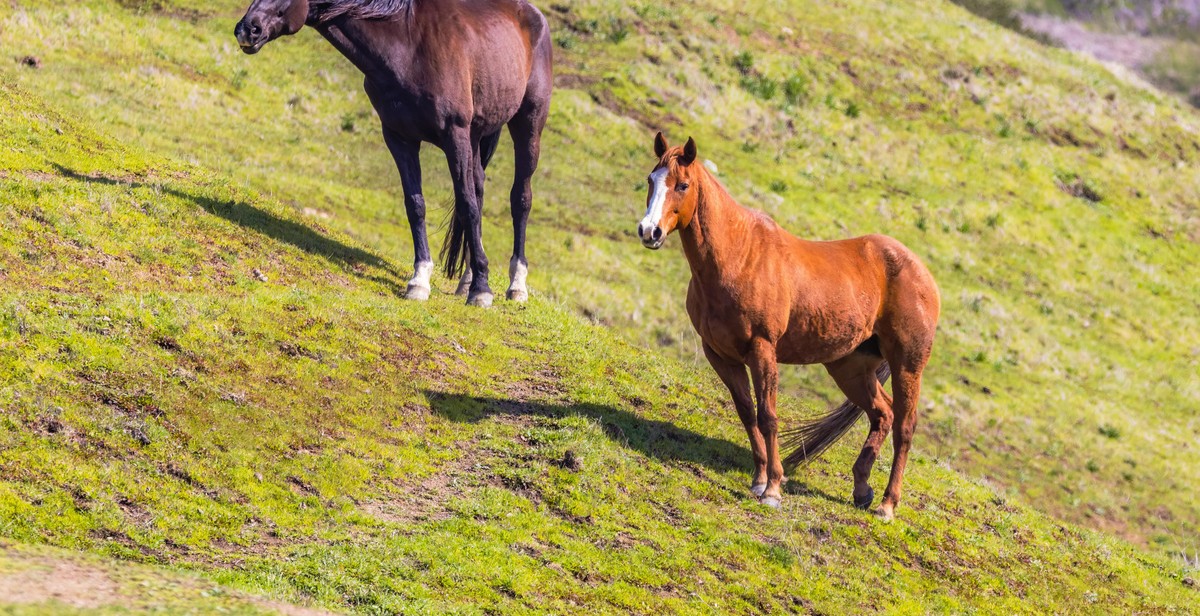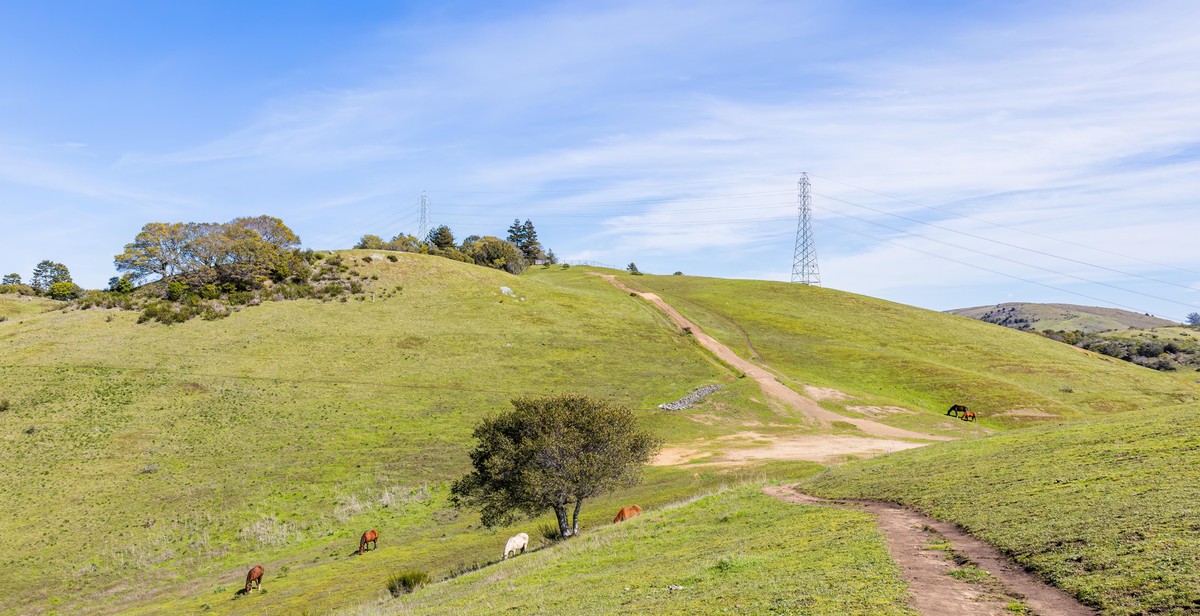How to Manage Pasture Rotation for Horses: Grazing Strategies for Optimal Pasture Health
As a professional horse trainer and enthusiast, I have learned the importance of proper pasture management for the health and well-being of horses. Grazing is a natural behavior for horses, but overgrazing and undergrazing can lead to a host of problems, including soil erosion, nutrient depletion, and health issues for the horses themselves.
In this article, I will share my personal experience and expertise in managing pasture rotation for horses. I will discuss the benefits of rotational grazing, how to create a grazing plan, and strategies for maintaining optimal pasture health. Whether you have a small backyard pasture or a large commercial operation, these tips and techniques can help you provide your horses with a healthy and sustainable grazing environment.
The Benefits of Rotational Grazing
Rotational grazing involves dividing a pasture into smaller sections and rotating the horses through each section on a regular basis. This allows the grass to recover between grazings, which promotes healthier grass growth and prevents overgrazing. Rotational grazing also helps to reduce the risk of parasite infestations, as the horses are not grazing in the same area for extended periods of time.
Creating a Grazing Plan
Before implementing a rotational grazing system, it is important to assess your pasture and determine the carrying capacity, or the number of horses that can graze on the pasture without causing damage. You should also consider the time of year and the weather conditions, as these factors can affect the growth and health of the grass.
- Divide your pasture into smaller sections
- Determine the number of horses that can graze in each section
- Create a grazing schedule
- Monitor the condition of the pasture and adjust the grazing plan as needed
Strategies for Maintaining Optimal Pasture Health
In addition to rotational grazing, there are several other strategies that can help you maintain optimal pasture health:
- Manage manure and urine to prevent nutrient buildup and parasite infestations
- Mow regularly to promote healthy grass growth and prevent weeds
- Test the soil to determine nutrient levels and adjust fertilizer applications accordingly
- Consider planting a variety of grasses and legumes to promote biodiversity and provide a more balanced diet for the horses
By implementing these strategies and following a grazing plan, you can help ensure that your horses have access to a healthy and sustainable grazing environment.

The Importance of Pasture Rotation
Pasture rotation is a vital part of managing a healthy pasture for your horses. It involves dividing your pasture into smaller sections and rotating the horses’ grazing areas periodically. The main goal of pasture rotation is to give each section of the pasture enough time to rest and recover from grazing, which helps improve the overall health and productivity of the pasture.
Overgrazing can cause a host of problems for your pasture, including soil compaction, erosion, and nutrient depletion. These issues can lead to a decline in pasture quality, which can negatively impact your horses’ health and well-being. By rotating your horses between different grazing areas, you can help prevent overgrazing and promote healthy pasture growth.
The Benefits of Pasture Rotation
There are many benefits to implementing a pasture rotation system for your horses. Here are just a few:
- Better pasture quality: By allowing your pasture to rest and recover between grazing periods, you can promote healthy grass growth and prevent soil compaction and erosion. This leads to better-quality pasture for your horses to graze on.
- Reduced parasite load: Parasites can build up in a pasture over time, putting your horses at risk of infection. By rotating your horses between different grazing areas, you can help reduce the parasite load in each section of the pasture.
- Improved nutrient distribution: Horses tend to graze selectively, meaning they will eat certain types of grasses and weeds more than others. By rotating your horses between different grazing areas, you can help promote more even distribution of nutrients throughout the pasture.
- Cost savings: By managing your pasture more effectively, you can reduce the need for costly supplements and other feed. Healthy pasture provides a natural source of nutrition for your horses.
Overall, pasture rotation is a simple yet effective way to promote healthy pasture growth and provide your horses with a nutritious and varied diet. By implementing a rotation system, you can help ensure your pasture remains productive and healthy for years to come.

Grazing Strategies
Grazing management is an essential component of pasture rotation for horses. Proper grazing strategies can ensure optimal pasture health, which in turn benefits the horses that graze on it. Here are some grazing strategies to consider:
Stocking Density
Stocking density refers to the number of horses grazing on a particular area of pasture. Overgrazing can lead to soil compaction, reduced pasture productivity, and damaged root systems. On the other hand, undergrazing can result in weeds and invasive species taking over the pasture.
As a general rule, it is recommended to keep stocking density at one horse per acre of pasture. However, this can vary based on the size and quality of the pasture, as well as the nutritional needs of the horses. Regular monitoring of the pasture and adjusting the stocking density accordingly can help maintain optimal pasture health.
Rest Periods
Rest periods refer to the amount of time a pasture is left ungrazed to allow for regrowth. Rest periods are crucial for maintaining pasture productivity and preventing overgrazing. The length of the rest period depends on the growth rate of the pasture and the number of horses grazing on it.
A general guideline is to allow for a rest period of 30-60 days before allowing horses to graze on the same area again. However, this can vary based on the season, weather conditions, and pasture quality. Regular monitoring of the pasture and adjusting the rest period accordingly can help maintain optimal pasture health.
Rotational Grazing
Rotational grazing involves dividing a pasture into smaller sections and rotating the horses through each section, allowing for rest periods in between. This strategy can help prevent overgrazing and promote even regrowth of the pasture.
There are several rotational grazing methods, including strip grazing, paddock grazing, and cell grazing. Each method has its advantages and disadvantages, and choosing the right method depends on the size and quality of the pasture, as well as the number of horses grazing on it.
| Method | Description |
|---|---|
| Strip Grazing | Dividing a pasture into long strips and rotating horses through each strip. |
| Paddock Grazing | Dividing a pasture into smaller paddocks and rotating horses through each paddock. |
| Cell Grazing | Dividing a pasture into small cells and rotating horses through each cell. |
Overall, proper grazing strategies are essential for maintaining optimal pasture health and ensuring the well-being of horses. Regular monitoring and adjustment of stocking density, rest periods, and grazing methods can help achieve these goals.
Pasture Maintenance
Proper pasture maintenance is essential for ensuring optimal pasture health and the well-being of your horses. The following are some of the key pasture maintenance practices to keep in mind:
Fertilization
Fertilization is an important part of pasture maintenance. It helps to replenish the nutrients in the soil and promote healthy grass growth. Before fertilizing your pasture, it is important to get a soil test done to determine the nutrient deficiencies. Based on the results of the soil test, you can choose the appropriate fertilizer and apply it at the recommended rate.
Weed Control
Weeds can quickly take over a pasture and choke out the desirable grasses. It is important to control weeds in order to maintain a healthy and productive pasture. There are several ways to control weeds, including mowing, hand pulling, and using herbicides. When using herbicides, be sure to follow the label instructions carefully and apply them only to the areas where weeds are present.
Mowing
Regular mowing is necessary to keep the grass at a healthy height and prevent it from becoming too tall and woody. The frequency of mowing will depend on the growth rate of the grass and the grazing intensity. In general, it is recommended to mow the pasture every 3-4 weeks during the growing season. Be sure to set the mower height to leave at least 3-4 inches of grass to promote healthy regrowth.
Dragging
Dragging is an important part of pasture maintenance as it helps to break up manure piles and distribute them evenly across the pasture. This helps to prevent overgrazing in certain areas and promotes even grass growth. Dragging should be done regularly, especially after heavy rain or grazing events. Use a harrow or chain drag to break up the manure piles and distribute them evenly across the pasture.
Conclusion
By following these pasture maintenance practices, you can ensure that your pasture remains healthy and productive for your horses. Regular fertilization, weed control, mowing, and dragging are essential for maintaining optimal pasture health and promoting healthy grass growth.
Conclusion
Proper pasture management is essential for the health and well-being of horses and the land they graze on. By implementing a rotational grazing system, horse owners can ensure that their pastures remain healthy and productive while providing their horses with nutritious forage.
Key Takeaways
- Rotational grazing allows pastures to rest and recover while horses graze on fresh, nutrient-rich forage.
- Effective pasture management requires careful planning, monitoring, and maintenance.
- By using a combination of grazing strategies, horse owners can optimize pasture health and productivity.
- Regular soil testing and fertilization can help maintain soil fertility and prevent nutrient imbalances.
- Proper manure management is essential for preventing pasture degradation and nutrient runoff.
Final Thoughts
As a seasoned horse owner and pasture manager, I have seen firsthand the benefits of implementing a rotational grazing system. Not only does it promote healthy pastures and happy horses, but it also helps to preserve the land for future generations. By following the grazing strategies outlined in this article and staying vigilant in pasture management, horse owners can create a sustainable ecosystem that benefits both their horses and the environment.
| Need help managing your pastures? | Contact us today to learn more about our pasture management services. |
